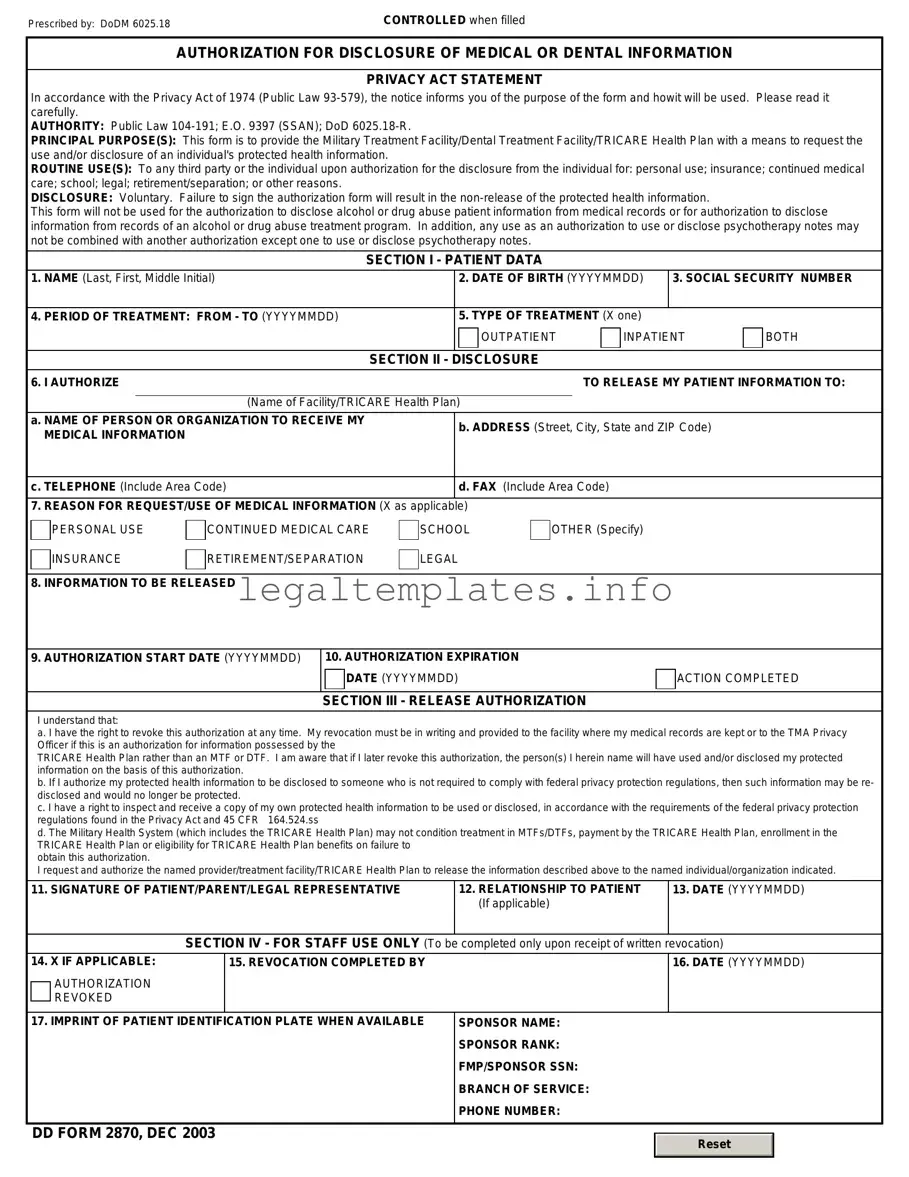What is a DD 2870 form used for?
The DD 2870 form, also known as the Authorization for Disclosure of Medical or Dental Information, is used to grant permission for the release of an individual's medical or dental records to authorized recipients. This form is often utilized within the Department of Defense (DoD) and related healthcare settings, serving as a formal way to ensure patient consent is obtained before sharing sensitive health information with other parties, such as insurance companies, healthcare providers, or legal representatives.
Who needs to fill out the DD 2870 form?
Any individual who wishes to have their medical or dental records released or shared with a third party must fill out the DD 2870 form. This requirement applies to service members, dependents, retirees, and other beneficiaries who receive care within the Military Health System. It ensures that the patient's privacy is protected, and their records are only shared with their consent.
Where can I obtain a DD 2870 form?
The DD 2870 form can be obtained from any medical treatment facility (MTF) within the Department of Defense, including hospitals and clinics. Additionally, it is available online through various DoD websites and portals that provide access to military forms. Patients can also request the form from healthcare providers or administrative offices within their healthcare network.
How is the DD 2870 form submitted?
After filling out the DD 2870 form, it should be submitted directly to the medical treatment facility (MTF) where the patient receives care or where their records are held. Submission can typically be done in person, by mail, or through secure electronic methods, depending on the facility's protocols. It is essential to follow the specific instructions provided by the healthcare provider or MTF to ensure proper handling and privacy compliance.
What information is needed to complete the DD 2870 form?
To complete the DD 2870 form, individuals must provide personal identification information, including their name, date of birth, and Social Security Number (SSN) or DoD Identification (ID) number. The form also requires specific details about the information being requested, such as the type of records, the dates of service concerned, and the purpose of the disclosure. Additionally, the name and address of the recipient(s) authorized to receive the information must be clearly stated.
Is there a deadline for submitting the DD 2870 form?
While there is no universal deadline for submitting the DD 2870 form, timely submission is crucial to avoid delays in the processing of requests for medical or dental records. It is advisable to submit the form well in advance of when the records are needed, especially if they are required for time-sensitive matters such as claims processing, legal cases, or continuity of care. The specific healthcare provider or facility may provide guidance on their processing times.
Can I revoke the authorization provided on the DD 2870 form?
Yes, the authorization granted through the DD 2870 form can be revoked by the individual who originally provided it. To do so, the individual must submit a written statement to the same medical treatment facility (MTF) where the original authorization was sent, indicating their desire to revoke the consent. This statement effectively nullifies the authorization and stops any further sharing of the individual’s health information based on the previously submitted form.
What if my request for information via the DD 2870 form is denied?
If a request for information based on the DD 2870 form is denied, the individual has several options. Firstly, it is important to understand the reason for the denial, which should be provided by the facility or entity handling the request. Common reasons may include incomplete information on the form or a failure to prove the necessity of the disclosure. Depending on the reason, the individual may be able to correct any errors and resubmit the form or appeal the decision through channels specified by the medical treatment facility or healthcare provider.

